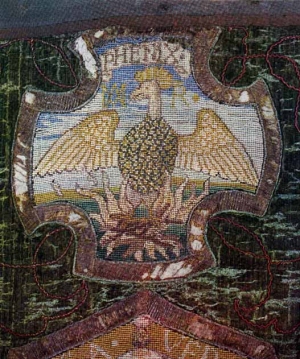Needlework
Throughout the Middle Ages, the Renaissance, and into the modern world,
needle arts were primarily the domain of women.For lower class women the
work was more mundane: mending and making lingerie and household items
for her family. For upper class women, it was an opportunity for virtuoso
expressions of creativity. The needlework a woman did was worn on garments
for herself, her husband
and children, decorated her home with hangings,
table rugs,
and cushions,
and was given as gifts. For women of the artisanal class it could be a
trade, and embroidery guilds were among the few that admitted women. The
following are some useful links.
Mary Stuart's
Embroidery
Queen Elizabeth's
seal purse
The Bradford
Table Rug
Man's day cap, 1600
16th Century Samplers
Fine embroidery at the
V&A
Embroidered work at
the Bath Museum
Embroidery &
Needle Lace at the V&A
Elizabethan mittens
Blackwork
Gallery
Bronwen's Blackwork
Blackwork
Designs from Period Sources
Needlelace
Bobbin Lace
Lace Patterns
History of Lace
Making
Beadwork
Applique
